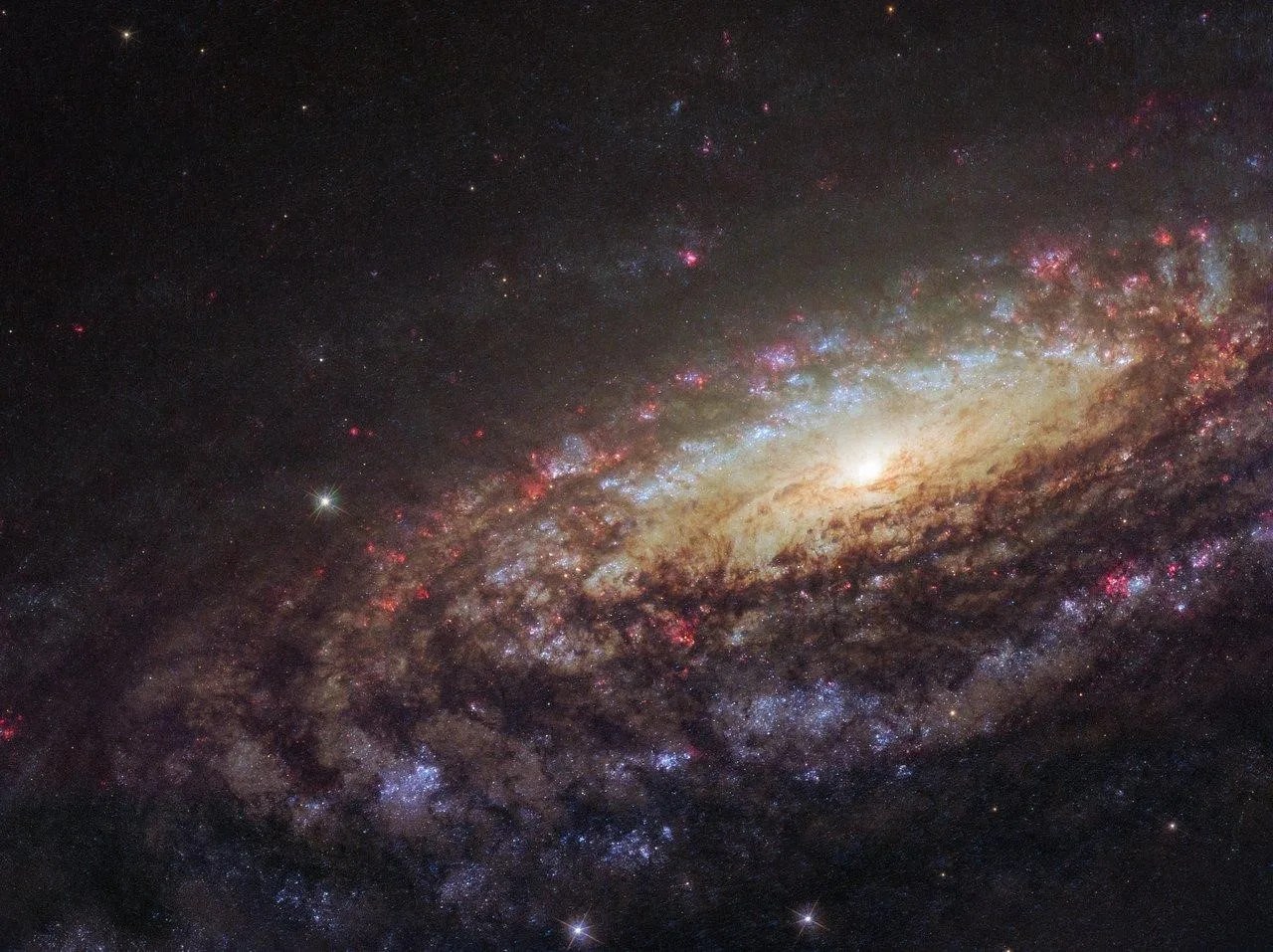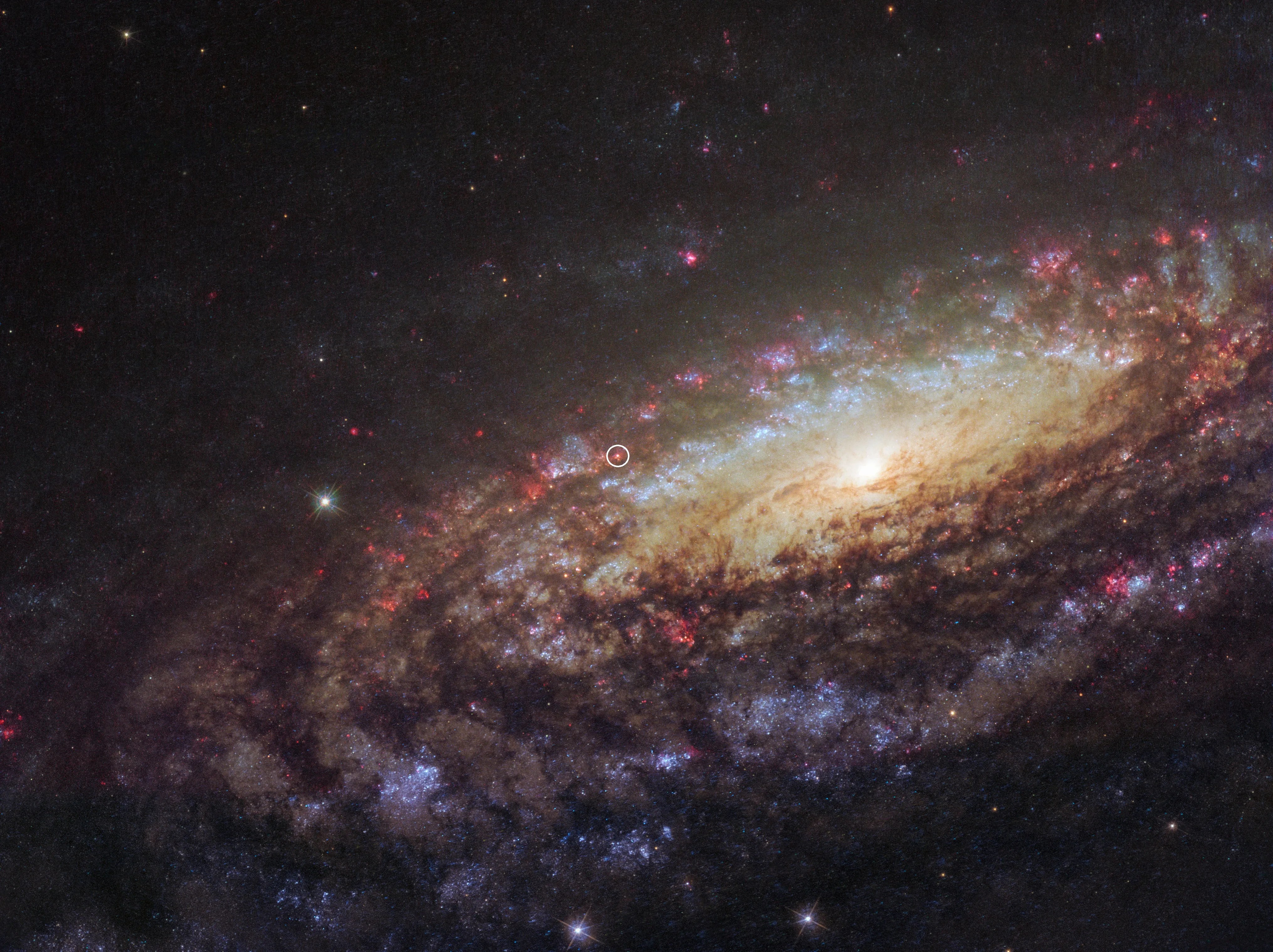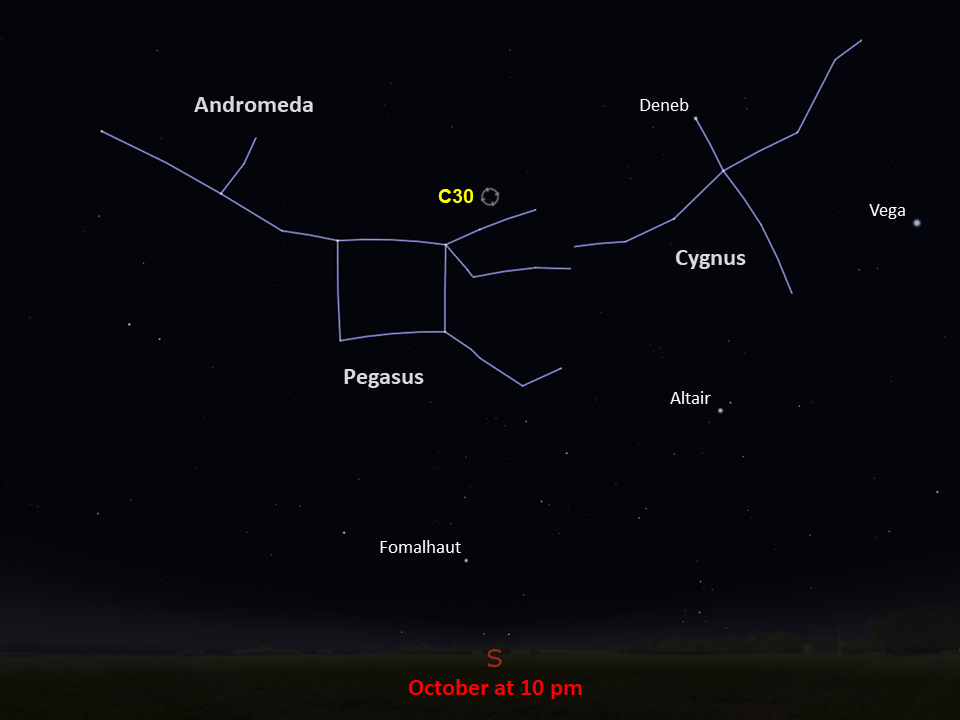Caldwell 30
Head to a dark sky to see this galaxy's sweeping spiral arms in larger telescopes.
Distance
45 million light-years
Apparent Magnitude
9.5
constellation
Pegasus
object type
Spiral Galaxy

The majestic spiral galaxy Caldwell 30, also cataloged as NGC 7331, is often touted as an analog to our own Milky Way, as its size, shape, and mass are similar to our galaxy’s. Caldwell 30’s starry disk is inclined to our line of sight, so long telescopic exposures often result in images that evoke a strong sense of depth. In this Hubble close-up, taken in visible and ultraviolet light using the Wide Field Camera 3, the galaxy’s magnificent spiral arms feature dark, obscuring dust lanes, bright bluish clusters of massive young stars, and the telltale reddish glow of active star-forming regions. The bright, yellowish central regions harbor populations of older, cooler stars. As in the Milky Way, a supermassive black hole lies at the core of this near-twin galaxy.

Hubble took this image of Caldwell 30 while studying a supernova explosion, which is the fiery death of a massive star. This supernova, called SN 2014C, experienced an unusual and dramatic transformation that involved a significant upsurge in hydrogen content. Hubble’s observations provided a chance to gain insight into the final stages of massive stars.
Caldwell 30 is located about 45 million light-years away at the northern boundary of the constellation Pegasus. The galaxy is only about half a degree away from a group of five galaxies known as Stephan’s Quintet. Caldwell 30 and the quintet may appear to be near each other in the sky, but the quintet is actually about six times farther away from Earth.
Caldwell 30 was discovered in 1784 by famed astronomer William Herschel, who also discovered the planet Uranus as well as many other Caldwell objects. Late autumn skies will provide the best view from the Northern Hemisphere (or spring skies in the Southern Hemisphere). However, with a magnitude of 9.5, Caldwell 30 will require a telescope or large binoculars to see it for yourself. In light-polluted skies, only the central core of the galaxy is visible. Under dark skies, a large telescope will also reveal the galaxy’s sweeping spiral arms.
For more information about Hubble’s observations of Caldwell 30, see:
Twins with Differences

Glossary
Magnitude - The brightness of an astronomical object, represented by a number; bright objects have low numbers on the magnitude scale, while dim objects have high numbers.
Spiral Galaxy - A galaxy characterized by its spiral structure, with star-filled arms that extend out from the center of the galaxy and host regions of star formation.
Supermassive Black Hole - A black hole millions or billions of times more massive than the Sun, typically residing at the center of a large galaxy.
Supernova - The explosion of a massive star at the end its life, which ejects material into space and causes the star to temporarily brighten in our sky.
Explore Hubble's Caldwell Catalog
The following pages contain some of Hubble’s best images of Caldwell objects.

Caldwell 1
Also known as NGC 188, this group of stars formed from a large cloud of gas making the stars roughly…

Caldwell 2
This shell of gas is expanding outward, away from the dying star within.

Caldwell 3
This barred spiral galaxy was first spotted by British astronomer William Herschel in April 1793 in the constellation Draco.




